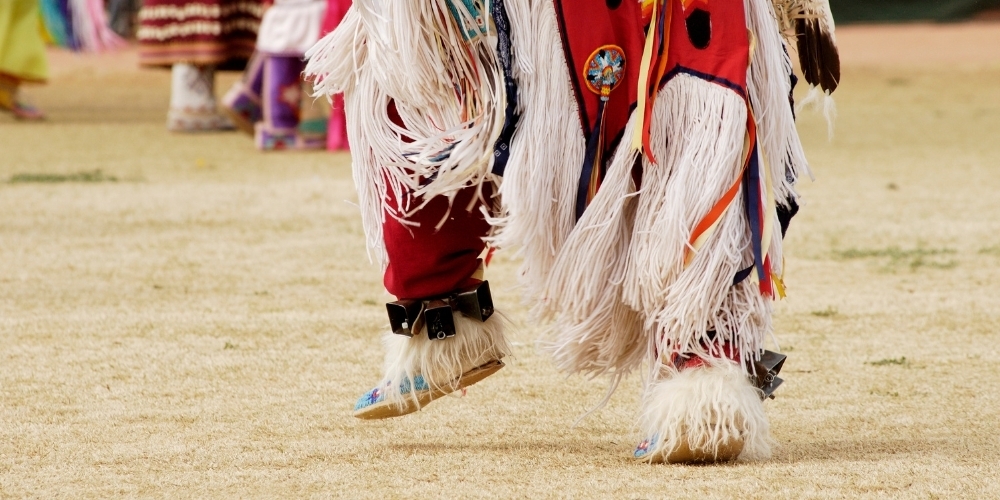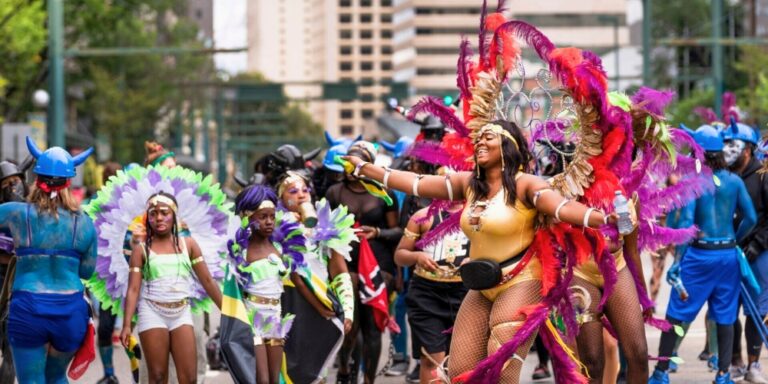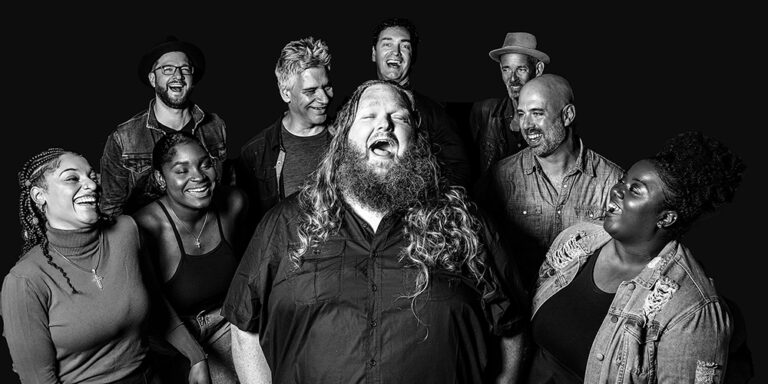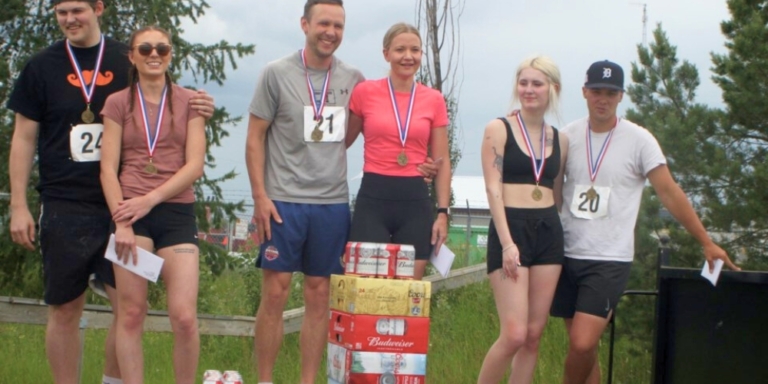Stories have long been the main forms of communication for humans. Stories can help us learn about others and to find understanding and empathy.
For the Îyârhe (Stoney) Nakoda, storytelling comes in many forms. They express themselves through various forms of art, from music to dance to craft.
Teresa Snow of Goodstoney First Nation tells stories through her complex and detailed beadwork.
She spends hours, sometimes years, gathering all the suitable materials to craft into regalia skillfully. Over her 50 years, Snow has handcrafted more than 20 regalia.
“We tell our stories through beadwork, unlike a book…we do it through beadwork or the sewing that we do,” Snow told the Rocky Mountain Outlook. “We don’t necessarily have a written tradition, so it’s often through art that we tell our stories.”
Some of Snow’s works will be on display at the Canmore Museum’s Wagaichibi Îhnuthe: The Dance Regalia of the Stoney Nakoda exhibit from September 21 to January 18, 2024.
According to Linda Whittaker, the museum’s Interim Executive Officer, the exhibit is meant to create a more inclusive museum that better represents and tells the stories of people in the Bow Valley, including the Stoney Nakoda.
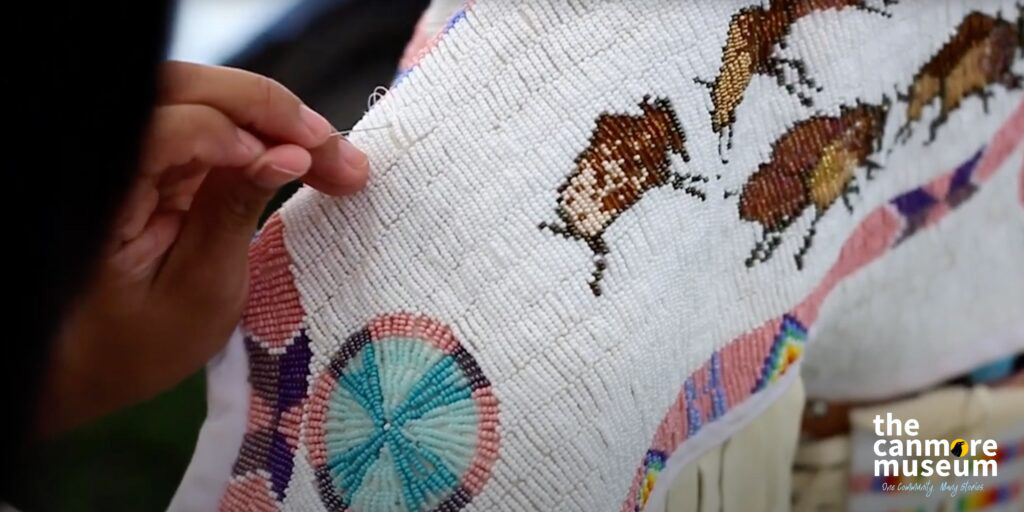

“We recognize that our Stoney Nakoda neighbours are particularly excluded from a number of previous actions, and so we wanted to take an opportunity to start to bridge that gap,” said Whittaker.
Wagaichibi Îhnuthe celebrates the First Nations’ powwow and traditional regalia worn by Goodstoney, Chiniki, and Bearspaw dancers, made mainly by Snow and her nephew, Eli Snow.
Powwow dances are expressions of Indigenous culture, history, and spirituality. Regalia are a sacred part of a powwow, worn by dancers to entertain and tell a story.
While Snow mainly uses beadwork to craft regalia, the outfits can be made with other materials, such as ribbons, shiny materials, and quills. Cotton is commonly used as a base material for regalia, but traditional materials like buckskin are also used.
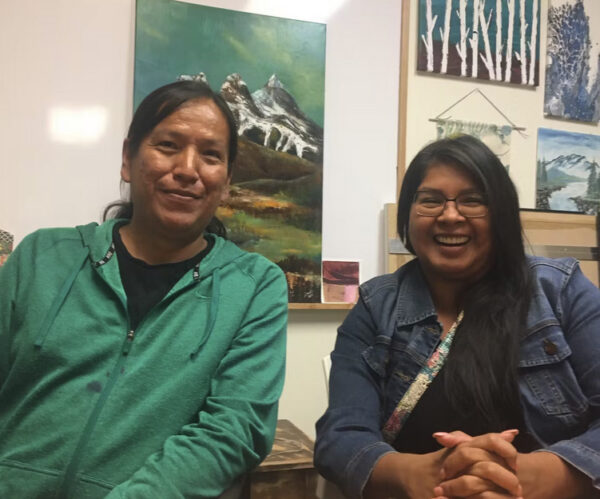

Before settlers arrived from Europe, quillwork was predominantly used in Stoney dances and clothing. The Stoney Nakoda were introduced to beads through trade with the settlers.
“Beads came here by way of Europe and were traded at trading posts with First Nations…We traded with them, and we used those materials because we were segregated into reserves. We couldn’t hunt, and we couldn’t get quills,” explained Snow.
Some of Snow’s regalia featured at the exhibit have different styles of quillwork. These regalia represent pre-contact times and convey that the Stoney Nakoda are “more than just beads and feathers.” But Snow’s intricate regalia wouldn’t exist without her time and energy.
“A lot of energy goes into these pieces. One outfit took about five years to get all the pieces at different times because of work, school, family, and just being in that right place to make those things,” said Snow.
One of Snow’s masterpieces on display is a regalia called a woman’s fancy that illustrates her healing journey. The regalia features horses, which represent healers in Stoney Nakoda culture. Powwow dances are another form of healing meant to lift spirits, bringing the regalia’s story together.
Snow started bead working young, learning from family members, mentors, and relatives.
In addition to beadwork, crafting moccasin-like footwear has been passed down through generations of Stoney Nakoda. The footwear is traditionally made using beads and tanned hide or buckskin that wraps around the leg to hold it in place. Dancers wear the footwear as a way to stay grounded in tradition.
The beadwork used in powwows is an important part of Stoney Nakoda culture that has been passed down for generations.
Each regalia crafted by Snow tells a story that can’t be captured in words. Thanks to the efforts of artists like Snow, beadwork remains a big part of powwows today carrying stories of the past into the stories of today.

